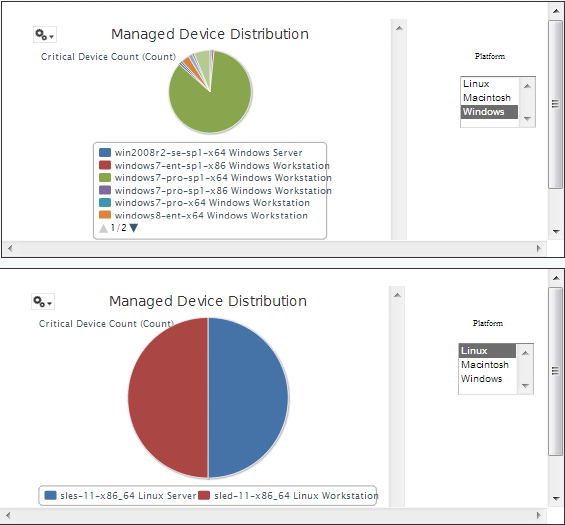3.3 Tips for Designing Dashboards
Charts and small crosstabs are best suited for dashboards. However, you can design table reports that work well in the dashboard. Such reports tend to be very narrow and are typically used with input controls to limit the number of rows they return.
3.3.1 Input Control Tips
When designing input controls for a dashboard, follow these tips:
-
If you want a single input control on the dashboard to control the data displayed in multiple reports, ensure that the parameters in these reports have the same name as the input control.
-
When defining a parameter in a report, specify a significant name that can be reused in other reports. Then, when two reports having the same parameter are added to the dashboard, their input controls will display as in the list. Storing such input controls in the repository enables you to reuse them in other reports that are designed and added to the repository.
-
To pass a value to an external URL, the that you specify to the input control must match the name of a parameter that the URL can accept. The value of the input control must also be a value that the URL can accept. The target URL is likely to have additional requirements and limitations.
NOTE:The input control must pass data that the URL can accept. Otherwise, the server might not be able to retrieve the correct data from the external URL.
3.3.2 Additional Tips
When you create or edit a dashboard, follow these tips:
-
Alignment of items:
-
You can use the arrow keys to move selected content, one grid space at a time.
-
Press the Ctrl key to move the selected content, a single pixel at a time.
-
-
Selection of items:
-
The items on the context menu change depending on your selection. For example, the context menu might include the option or option, depending on whether you selected a button or a frame.
-
If you select multiple items or frames, the context menu includes only options that apply to all selected items. For example, if you select a frame and a button, the context menu includes only the option.
-
When you select multiple frames, the context menu includes several options that can apply to the frames as a group, such as and.
-
Select multiple frames to change their sizes all at once. When you drag the edge of one frame, the other frames resize as well.
-
-
Relocation or deletion reports in dashboards:
-
When you delete a report that includes input controls from the dashboard, the controls are also deleted, but their labels remain. Delete labels manually.
-
If a custom URL frame is mapped to a deleted input control, the server indicates the default URL, but does not pass the parameter.
-
Keep track of reports used in dashboards to prevent unintentional deletion. The server deletes a report from a dashboard when you delete it from the repository or when you move it to a new location.
-
-
Embedding dashboards:
-
A dashboard can include other dashboards, unless this creates a circular dependency. Do not attempt to add a dashboard to itself.
-
Multiple reports in a dashboard that refer to the same input control are controlled by that single input control. If you want users to set the input controls separately for each report, create two dashboards, with each referring to the input control; then, create a third dashboard that includes the other two.
-
Adding the same dashboard twice to a parent dashboard can create a compelling comparison, as shown in Figure 3-1.
In the dashboard shown below, the same dashboard is used with two different input controls, one with the Windows platform; and the other with the Linux platform. In this example, the number of devices using different versions of Windows and Linux operating systems are shown.
Figure 3-1 Compelling Comparison Dashboard

-